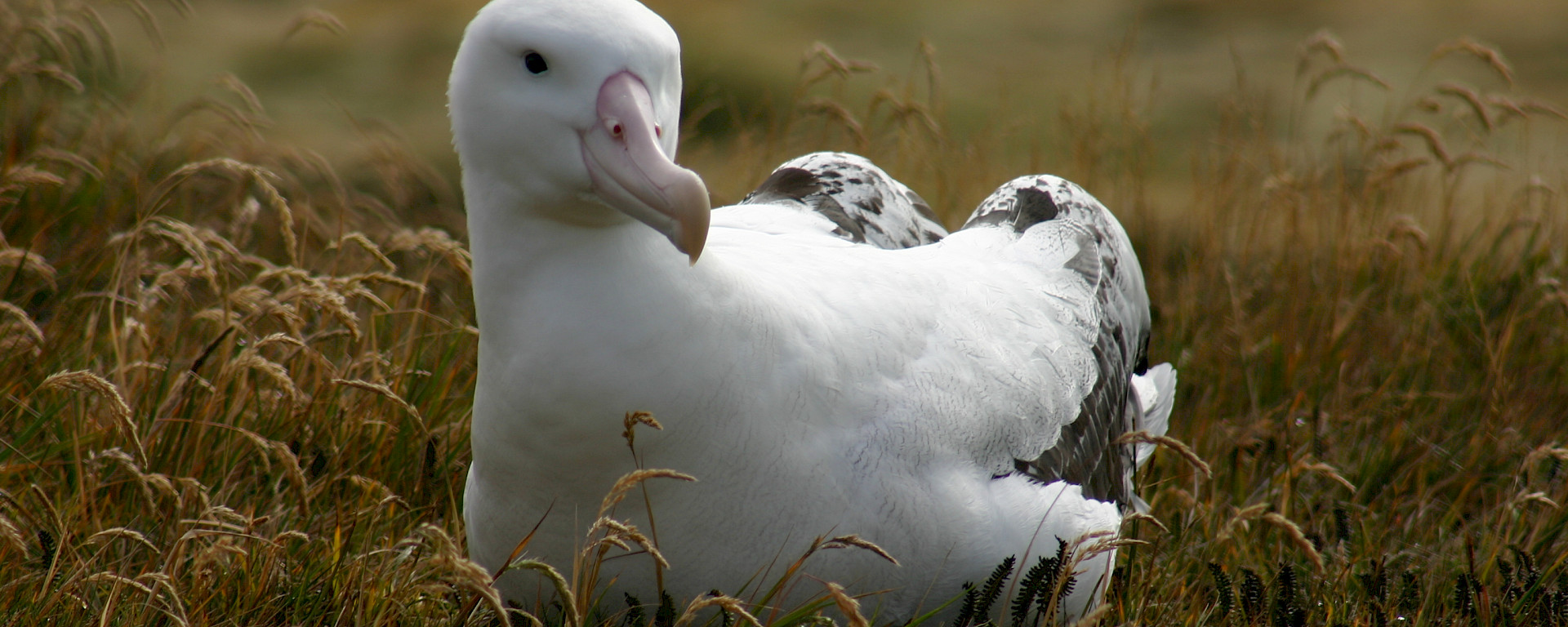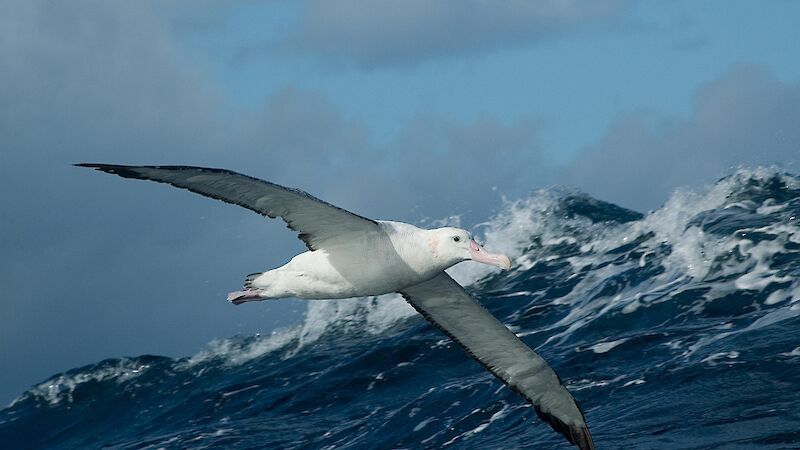Scientific name: Diomedea exulans
Physical description
Wandering albatross have a white head, neck and body, a wedge-shaped tail, and a large pink beak.
Juveniles have mostly dark plumage, which gradually whitens with age.
Distribution and abundance
Wandering albatross are found across the Southern Ocean. This includes Antarctic, sub-Antarctic and subtropical waters.
Wandering albatross breed on sub-Antarctic and Antarctic islands between 46° and 56°S.
Breeding islands include Iles Kerguelen, South Georgia and Macquarie Island.
Young birds remain at sea for 5–10 years before returning to their natal island to breed.
Conservation status: vulnerable with population trends decreasing. Decreasing populations are due to the birds being caught in long-line fishing operations.
Breeding
Wandering albatross breed once every two years. Both parents share the task of incubating the half-kilogram egg and rearing the chick.
Diet and feeding
Wandering albatross eat fish, cephalopods, jellyfish and sometimes crustaceans. They also eat penguin and seal carrion.
Chicks consume up to 100 kg of food during their rearing period. The rearing period lasts for approximately 300 days.
Foraging trips of wandering albatross can last for 50 days at a time. These trips tend to be much shorter during the breeding season.






